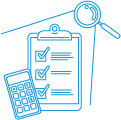The ability for a company to recoup its prior year tax losses has always been a contentious topic. If a company wishes to recoup its tax losses, it’s required to pass the continuity of ownership test (COT), and failing COT, the same business test (SBT).
Whether a company satisfies the COT is generally a question of fact and broadly depends on whether a company maintains the same underlying majority owners. 
The same cannot be said with respect to the SBT, as this test requires a subjective assessment to determine whether a company carries on the same business. In addition, a company cannot satisfy the SBT if it meets either of the following ‘negative tests’:
- It derives assessable income from a business of a kind that was not carried on before the test time (new business test); or
- It derives assessable income from a transaction of a kind that had not been entered into during its business operations before the test time (new transaction test).
The test is difficult to satisfy given the Australian Taxation Office (ATO) applies the criteria extremely narrowly, to the point where a business is required to remain almost identical.
That being stated, there may be light at the end of the tunnel for companies now that the similar business test (SiBT) is law. This change to the company loss rules was originally announced as part of the National Innovation and Science Agenda and Ideas Boom in 2015, with the Bill receiving Royal Assent on 1 March 2019 (you read that right, four years apart!).
As the name suggests, a company merely needs to carry on a ‘similar business’ in order to satisfy the SiBT and therefore be able to recoup its tax losses generated after 1 July 2015.
The test
In order to determine whether a company satisfies the SiBT the following non-exhaustive list of factors are required to be taken into account as noted in the legislation:
- The extent to which the assets that are used in the current business to generate assessable income were also used in its former business to generate assessable income;
- The extent to which the activities and operations from which its current business generated assessable income were also the activities and operations from which its former business generated assessable income;
- The identity of the current business and the identity of its former business;
- The extent to which any changes to its former business result from development or commercialisation of assets, products, processes, services or marketing or organisational methods of the former business.
The ATO has also released a Draft Law Companion Ruling (LCR 2017/D6) to assist companies to interpret the test and we expect the draft LCR to be finalised in the near future.
Comparison with SBT
There is no doubt that the SiBT has been implemented to provide a less stringent alternative to the SBT. Notably, the language used in the SiBT legislation considers ‘the extent’ to which there are differences between the current and former business, whereas the SBT stipulates that if there is any assessable income generated from a new business or transaction then you simply fail the test.
However, the more relaxed language and seemingly easier criteria to satisfy does not alleviate previous issues of the SBT.
By nature, the SiBT is still a subjective test that will be based on the specific facts relating to how alike a current business is to the former business. Furthermore, it is uncertain as to what ‘similarity’ constitutes and the degree of change in a given business that is acceptable.
Finally, as noted above, the list of criteria mentioned in the legislation is non-exhaustive and therefore all factors of a business will need to be considered in determining whether the SiBT is satisfied.
The hope and takeaway 
In the global and ever-evolving world we live in today, to have a test that requires a company to adhere to such definite criteria with respect to the operation of their business is an unrealistic and unreasonable ask.
There is no telling the extent to which this previous restriction un-incentivised research and innovation in Australia to enable companies to simply use the losses their businesses generated previously. Although not all issues have been solved, the SiBT is certainly a step in the right direction.
The SiBT has retrospective application to income years commencing on or after 1 July 2015. Consequently, companies obliged to rely on the SBT (from the 2016 income year onwards) that did not meet the criteria should look to re-explore their position as a result of the new SiBT.
We wait in eager anticipation for the first case that goes through the courts to hopefully clarify exactly what ‘similar’ means.
For more information
For a detailed discussion surrounding how the SiBT may be applicable for your business, please contact your local RSM adviser.

